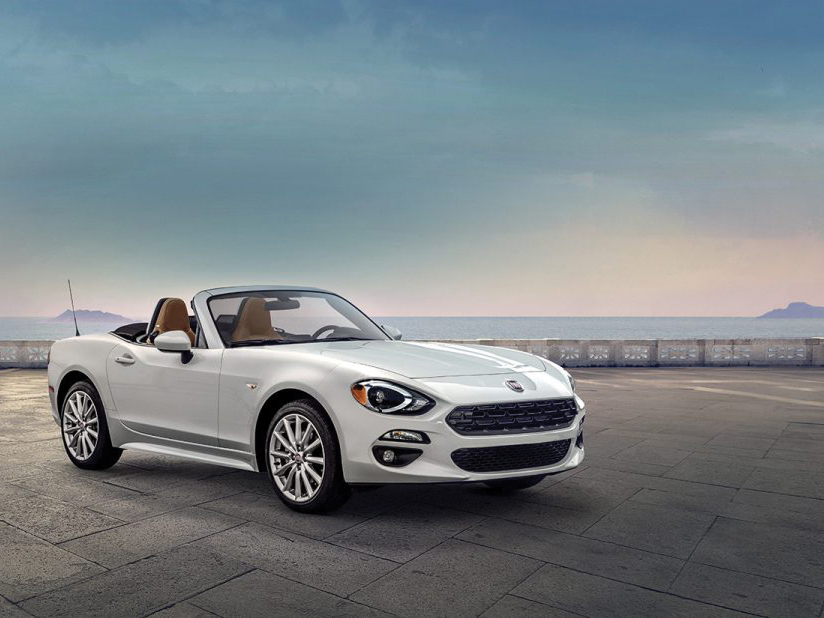
Courtesy of Fiat
Italian cars are known for having more character and flair than their rivals at the cost of spotty reliability. The saying goes that Fiat stands for “Fix It Again Tony.” Fiat is largely known for the 500, a tiny city car that sold millions worldwide over a 20-year production run and is widely recognizable by its iconic looks. Fiat is considered one of the most popular and successful automotive brands in Europe, being one of the few Italian automakers that caters to the lower end of the market. When Fiat reentered the U.S. automotive market in the late 2000s with the compact 500, the company had hopes of shaking up the entire microcar segment in the country.
The city and microcar segments were growing rapidly following the call for more fuel efficient vehicle post-Great Recession. Fiat followed in the footsteps of Mini and Volkswagen by giving the 500 distinctive retro styling essentially recreating the look of the iconic original Fiat 500 from the 1950s.
The 500 was met with only moderate success here and has recently been suffering from dwindling sales numbers despite spawning off two other larger variants: The 500X and 500L. In 2012, Fiat announced their second model to accompany the 500 lineup, the 124 Spider, and that it was going to be a built-in partnership with Mazda alongside the highly anticipated fourth-generation Miata. The main intention of the venture was to create two distinct roadsters built on the same rear-wheel drive chassis.
The Mazda Miata is one of the most iconic cars to have ever hit the road. The Miata was conceived to be the spiritual successor to the British MG, Triumph and Austin-Healey roadsters from the 60s and 70s. The Miata aimed to be lightweight and simple, yet modern and most importantly reliable. Since hitting the road in 1989, the Miata has been considered one of the best overall affordable sports cars and has sold hundreds of thousands of units.
The Fiat 124 name traces its roots back to a small roadster designed by Italian design company Pininfarina from the 1960s. The original 124 was a popular model that was, although plagued by terrible build quality, a fun-to-drive, stylish roadster.
The new 124 attempts to recreate the same magic and charm that the original roadster had but this time around with the aide of the best in the game: Mazda. Right off the bat, the 124’s design looks reminiscent of the original 124 but with some added retro elements. I personally find it more attractive than the new Miata. The 124 is almost half a foot longer than the Miata but it still keeps a sleek profile.
Bottom line: An affordable Italian convertible with Japanese roots
Apart from using the same platform, the two cars share most interior elements, making them appear nearly identical on the inside. That being said, Mazda designs some of the best interiors in its class and the 124 and Miata are no different. The layout is very user friendly and I didn’t spot any cheap material that could be found in other Fiats.
However, the two cars part ways when it comes down to the powertrains. The 124 uses a 1.4 MultiAir turbocharged 4-cylinder engine that’s designed and manufactured in Italy, which is comparable to the 2.0 naturally aspirated 4-cylinder in the Miata. As a result, the 124 makes 160 horsepower and 184 lb-ft of torque versus the Miatas 155 horsepower and 148 lb-ft of torque. Despite the more power and torque, the 124 is still slower to 60 than the Miata by half a second (6.8 for the 124 and 6.3 for the Miata) due to the fact that the 124 weighs nearly 150 pounds more than the Miata.
Despite being a more powerful powertrain, the powertrain in the 124 was a bit disappointing. It’s peppy and powerful and makes the tiny car feel plenty quick. However, it suffered from turbo lag off the line. Off boost, it feels like it’ll take an eternity for the car to get going and you’ll find yourself giving more throttle input than necessary. The Miata’s powertrain in comparison feels much more refined (being naturally aspirated). Power can be delivered through Fiat’s 6-speed automatic with manual shifting or a 6-speed-manual. The lack of paddle shifters was disappointing considering they are standard on the Miata.
Behind the wheel, the 124 is noticeably quieter and more composed than the Miata. That’s all thanks to a slightly thicker top, thicker glass and extra sound deadening. Fiat brought in many of their own suspension components in the 124, making the ride noticeably smoother while maintaining the same excellent handling that can be found in the Miata. The key difference between the two is the absence of body roll in the 124 which caused the car to feel much more composed through corners.
Behind the wheel, the car was a blast to drive, to say the least. The 124 accurately captures the Miata’s driving charm and magic. The car felt powerful enough, once it got up to speed, and the handling was nice and nimble. Unlike some other sporty cars around the $30,000 spectrum, the 124 isn’t loud or obnoxious, so its presence is more low-key on the road.
The 124 starts at just under $25,000, which is more than affordable for what it is. Among its competition of other sporty cars in this price range, like the Toyota 86 (also known as the Subaru BRZ), the 124 and Miata stand out as the only convertibles. Both the Miata and 124 offer different takes on the same platform as well — the 124 offering a more refined and sophisticated feel and the Miata a more edgy and sporty feel. Yet, both cars do the same job of serving as an excellent homage to brilliant two-seat roadsters of the decades past.
If you’re in the market for a sporty car under $30,000 and want to stray away from the usual options like the Volkswagen GTI and aforementioned Toyota 86 or Subaru BRZ, the 124 is worth more than a look: Its sharp retro styling and and refined cabin and rides, combined with the Miata’s excellent driving dynamics, create a more poised and refined offering in the category.
Pros and Cons
- Top notch handling, upscale interior, comfortable ride, value
- No paddle shifters, turbo lag
Chief Competitors: Mazda Miata, Toyota 86/Subaru BRZ, Volkswagen GTI
Are you in the market for a new or used car but don’t know where to start? Reach out to me at thefastlane.highlander@gmail.com and I’ll help you with the search.
Spec Sheet
| Powertrain & Chassis | 5 | Interior/Exterior | 5 |
| Acceleration | 3.5 | Front Seat Comfort/Space | 3.5 |
| Transmission | 3.5 | Rear Seat Comfort/Space | N/A |
| Fuel Economy | 3.5 | Cargo Space | 3 |
| Steering Feel & Handling | 4.5 | Fit and Finish | 4 |
| Brake Feel | 4 | Features | 3.5 |
| Ride | 4 | Interior Styling | 4.5 |
| Vaue | 4 | Exterior Styling | 4.5 |
| Overall | 3.85 | ||
Data Sheet
| Engine | turbocharged and intercooled SOHC 16-valve inline-4 |
| Transmission | 6-speed automatic with manual shifting mode |
| Horsepower | 160 hp @ 5500 rpm |
| Torque | 184 lb-ft @ 3200 rpm |
| 0-60 | 6.8 |
| 0-100 | 19.1 |
| Top Speed | 133 mph |
| Fuel Economy | City: 25, Highway: 36 |
| Base Price | $24,995 |








